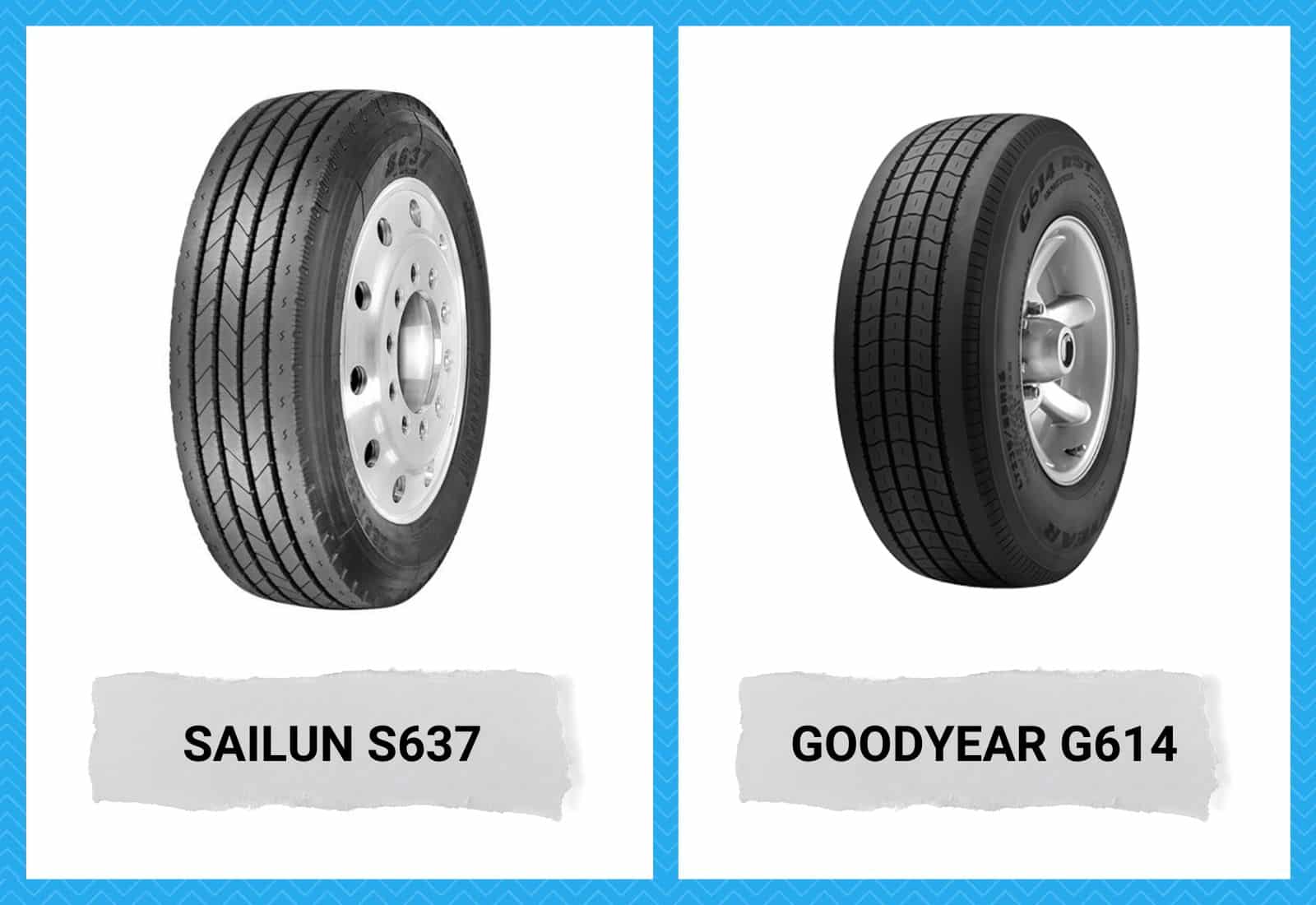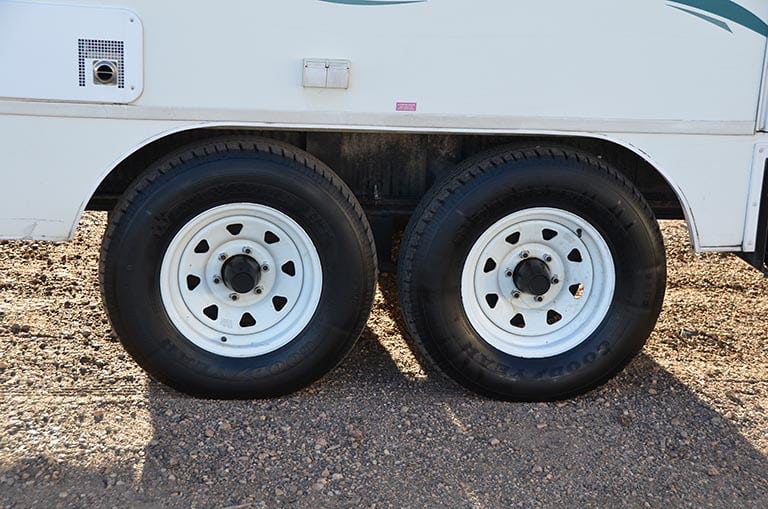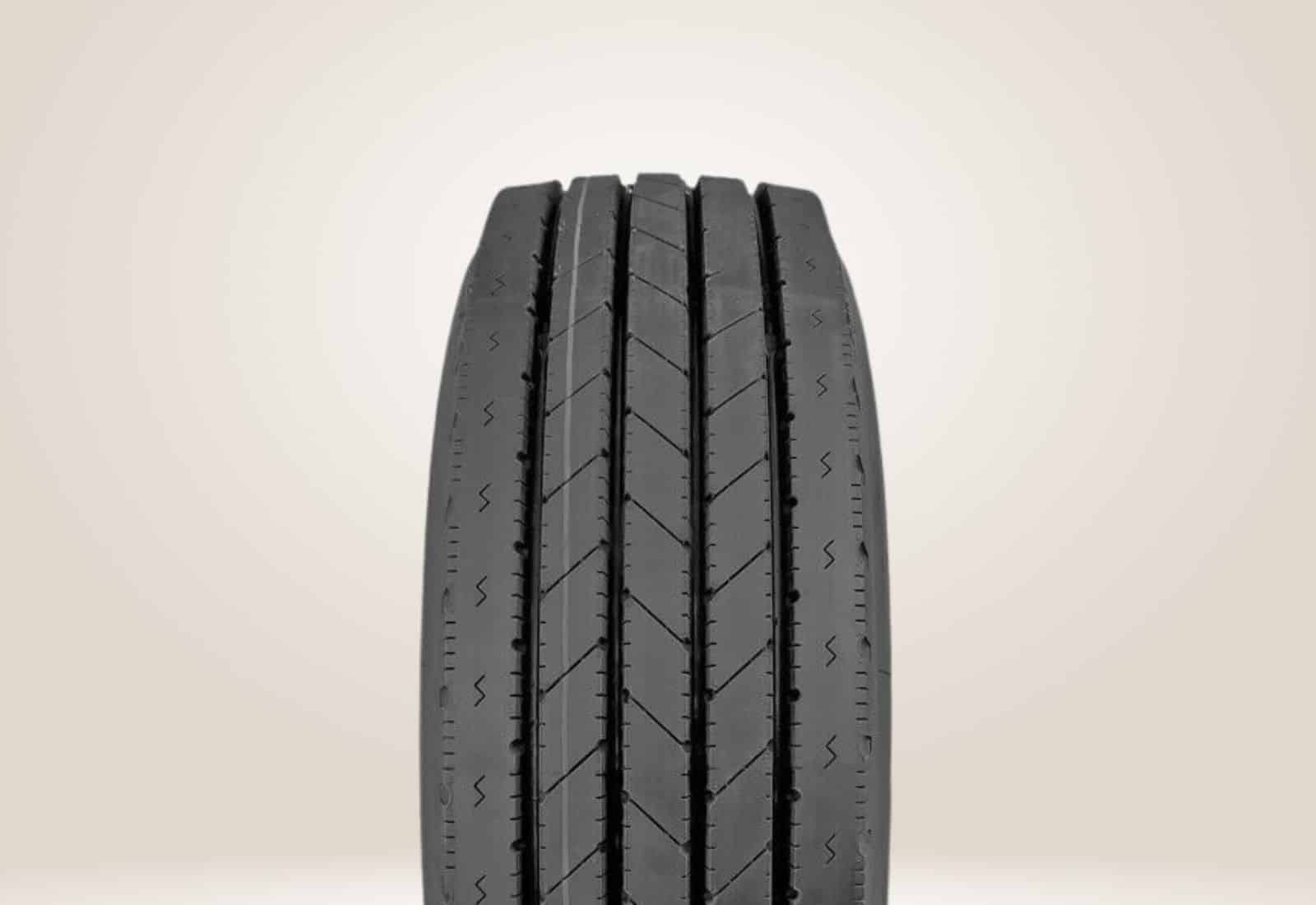
A trip to the boonies may come with all sorts of challenges—mud and potholes everywhere, tree branches crisscrossing the dirt track, and a jagged terrain that goes for miles.
Even a non-survivalist could tell a typical city car won’t make it halfway through the journey under such road conditions. It may be tricky even for a 4wd SUV or pickup.
That’s why recreational vehicles are so popular these days. They make backwoods exploration and escapades so much easier, thanks to their ultra-off-road capabilities.
Their high-road-clearance suspension and powerful shocks enable them to take on rocky landscapes with slight cabin vibration. But of course, the most critical element that makes this possible is their incredibly durable set of tires.
RV tires are made thicker and wider to handle the ruggedness of off-road surfaces and the weight of the RV and its content, which is several times heavier than a regular vehicle with passengers.
(Imagine a house raised on tires) Even worse, they are not always static, and they’re exposed to various forces that can puncture or slice them open when moving.
They could instantly burst if they aren’t thick enough to handle sharp debris. The tires must be among your top priorities if you plan to invest in a motorhome or trailer.
Of course, you can replace the tires that come with the RV you purchased if you think they won’t last. There are plenty of choices on the market that fit your specific boondocking needs.
Two of the most popular are Sailun S637 and Goodyear G614. Both tires have unique features that make them suitable for heavy vehicles. Here are some:
| Specifications | Sailun S637 | Goodyear G614 |
|---|---|---|
| Tire Size | ST235/80R16 to 275/70R22.5 | LT235/85R16 |
| Tread Depth | 10 to 19 in. | 12 in. |
| Rim Width | 6.50 to 8.25 in. | 6.50 in. |
| Overall Diameter | 30.8 to 37.9 in | 30.7 in. |
| Static Loaded Radius | 14.7 to 17.6 in. | 14.4 in. |
| Load Capacity | 3640 to 6395 lbs. | 3750 lbs. |
| Inflation | 110 to 130 psi. | 110 psi |
As you can see, Sailun S637 comes in a range of dimensions and capacities, while Goodyear G614 has only one. This is one of the key differences between these tire models.
You have a better chance of finding the most suitable tires for your RV with Sailun, but Goodyear also doesn’t disappoint. To make an informed choice, let’s further break down their features.
Comparing The Sailun S637 vs Goodyear G614
Tread
A tire must have a rough surface to keep a grip on the road but not too rough to start dragging the vehicle. Rubber is not a particularly coarse material, which explains why it has a naturally smooth surface finish.
But no other material has the elasticity and compressive/tensile strength necessary to hold up a vehicle than rubber.
Car manufacturers create tread patterns to increase a tire’s road traction. Tread is the outermost layer of a tire. Grooves and shoulders on a tire’s tread allow it to move more efficiently as these engravings stride on the road’s surface like the scales of a crawling snake.
You can see from the figures that Goodyear G614 has a 12-inch tread depth, while Sailun S637 has several, with 10 inches as its shallowest.
So if you’re looking for a particular tread depth that works perfectly for your RV, Sailun S637 is the better choice since it offers several options. But you might also want to factor in other specs before you choose.
Pressure
Maintaining the correct tire pressure prevents your car from bouncing too much and reduces the risk of blowouts. RV tires should have higher pressure tolerance than regular tires, considering the kind of terrains they take on.
Both Sailun S637 and Goodyear G614 have a single and dual inflation capacity of 110 psi. However, the larger of the Sailun S637 lineup can handle up to 130 psi.
The air inside each tire contracts when it’s cold and expands when it’s hot. Depending on the season, always check your RV tires’ pressure before hitting the road to avoid problems.
If the tires lose at least 30 percent of the pressure, you’ll feel the vehicle grinding beneath you. They might not be able to handle the excessive weight of the vehicle and end up bursting.
Blowouts are dangerous, especially when they happen while you’re in higher gear.
Rim
Like tire pressure, rim dimensions also affect your RV’s suspension performance. The rim must be neither too wide nor too shallow to allow the tires to flex correctly.
Otherwise, most excess vibrations will slip past the shocks and transfer onto the vehicle. The rule of thumb is the rim must be at least three-quarters of the tire’s width from flange to flange.
The table above shows that both Sailun S637 and Goodyear G614 have a minimum rim width of 6.50 inches. So if you’re getting a large RV with wider tires, you must go for the Sailun lineup.
However, the 6.50-inch rim would work on just about any standard camper, meaning Goodyear G614 isn’t entirely a poor choice.
Diameter
When it comes to off-road travel, the trickiest challenge you have to face besides potholes are bushes and rocks. They can leave severe damage on your RV’s undercarriage when you hit them at high velocity.
Thankfully, RV tires are typically bigger than regular tires to increase ground clearance. This is one of the reasons motorhomes are the perfect vehicle for outdoor adventures.
Between Sailun S637 and Goodyear G614, the first has a much bigger diameter. Even their smallest one is slightly larger than Goodyear G614.
When the RV is stationary, the wheels tend to shrink a little bit, but as you can see, the Sailun S637’s diameter only goes down to about 29.4 inches, which isn’t too low.
Goodyear G614, on the other hand, shrinks down to 28.8, which is much smaller than its counterpart.
Choosing the Right Tires for Your RV
With the right tires, you can go to any campsite without worrying about road conditions. You can also minimize the cost of tire repair and replacement. Finally, and most importantly, you can avoid blowout-related accidents that can endanger your family and assets.
It takes experience to know which tires work best for your RV, although many online tips and reviews can give you helpful insights. Testing out multiple options may not do you good, too.
Better narrow down your choices before you test any tires. Ask an expert if you’re not confident in your current knowledge about RV tires.



